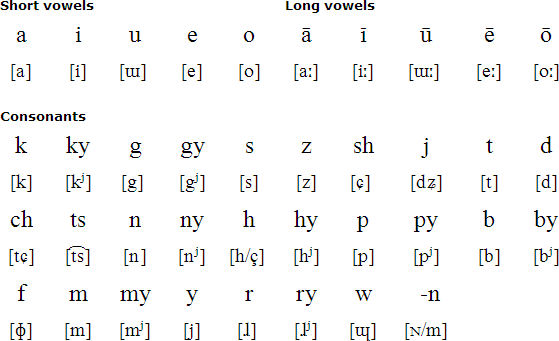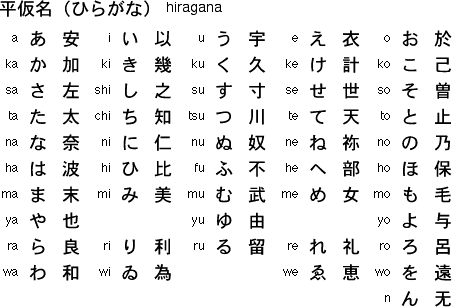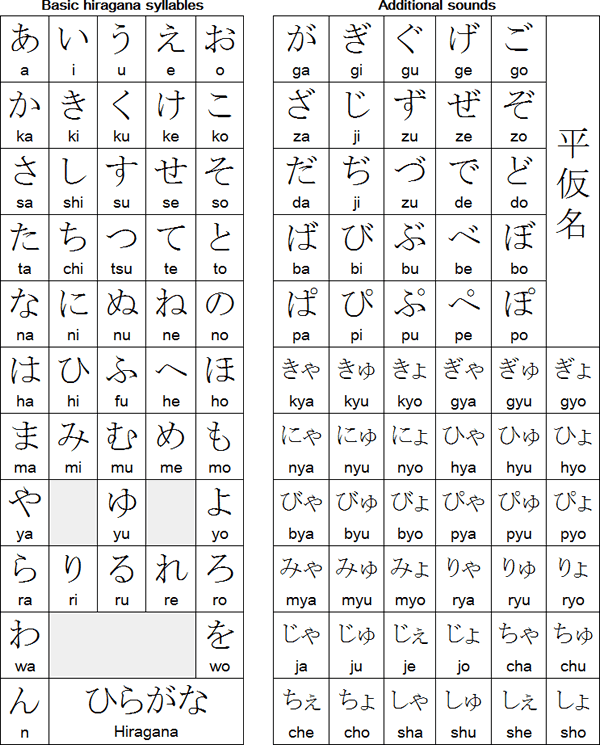
Japanese Katakana
Origin
The katakana syllabary was derived from abbreviated Chinese characters used by Buddhist monks to indicate the correct pronunciations of Chinese texts in the 9th century. At first there were many different symbols to represent one syllable of spoken Japanese, but over the years the system was streamlined. By the 14th century, there was a more or less one-to-one correspondence between spoken and written syllables.
The word katakana "part (of kanji) syllabic script". The "part" refers to the fact that katakana characters represent parts of kanji.
Characteristics and usage of katakana
The katakana syllabary consists of 48 syllables and was originally considered "men's writing". Since the 20th century, katakana have been used mainly to write non-Chinese loan words, onomatopoeic words, foreign names, in telegrams and for emphasis (the equivalent of bold, italic or upper case text in English). Before the 20th century all foreign loanwords were written with kanji.
Katakana are also used to write Ainu, a language spoken on the northern Japanese island of Hokkaido.
Katakana and the kanji from which they developed
In each column the rōmaji appears on the left, the katakana symbols in the middle and the kanji from which the symbols were derived on the right.
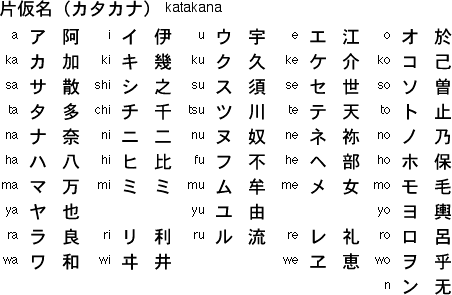
The symbols for 'wi' and 'we' were made obsolete by the Japanese Minsitry of Education in 1946 as part of its language reforms.
Katakana syllabary (片仮名 / カタカナ)
The symbols on the right are the basic katakana syllabary in the order they appear in dictionaries and indices (reading from left to right and top to bottom). Additional sounds (the symbols on the right) are represented by diacritics and combinations of symbols.
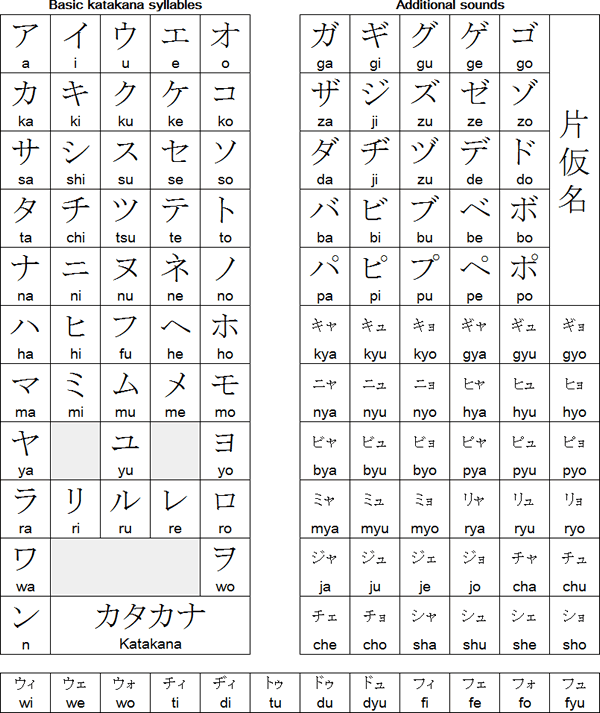
Long vowels

Pronunciation
